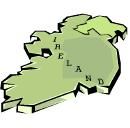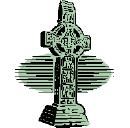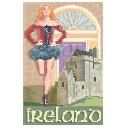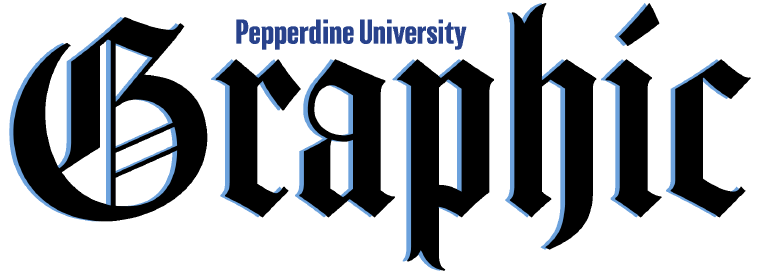By Rebecca Lawson
Staff Writer
 The sound of the Irish whistle comes clear and pure over the CD stereo. A young girl listens, enraptured, not quite knowing why. All she knows is she loves everything Irish, and as she leafs through a book of pictures of the green hills and thatched roof houses, she
The sound of the Irish whistle comes clear and pure over the CD stereo. A young girl listens, enraptured, not quite knowing why. All she knows is she loves everything Irish, and as she leafs through a book of pictures of the green hills and thatched roof houses, she  swears someday she’ll go there.
swears someday she’ll go there.
March comes in like a lion, and the young girl starts to see the shamrock appear in the store windows. “St. Patrick’s Day,” they call it. It’s a holiday for the Irish. The girl doesn’t know much about St. Patrick, or what he did to get his own holiday, but she knows from her great-grandmother that her family is part Irish. So why don’t they celebrate this St. Patrick’s Day? She asks her mother if they can.
“Why would we do that?” Her mother says. “It’s a Catholic holiday. We aren’t Catholic.”
“But it’s a holiday for Irish people,” the girl protests.
“We aren’t Irish, we’re American,” her mother insists.
“We’re part Irish,” the girl mumbles, as she walks away disappointed.
Nine years ago, that girl was me. Although I never convinced my family to celebrate St. Patrick’s Day, I have continued to learn about the holiday and the culture it comes from.
 The celebration originates with the Catholic feast day of St. Patrick, the patron saint of Ireland. In the late 4th century A.D., St. Patrick was born Maewyn Succat. Unlike many assume, Patrick was not Irish, but actually Roman. According to his autobiography, he was kidnapped at age 16 and sold into slavery in Ireland. Six years later he escaped, and went to Rome to study under St. Germaine. In the early 400s he became a priest and returned to Ireland as a missionary. He is credited with converting the majority of Ireland to Catholicism, and for doing works of service among and for the Irish people. Patrick is now considered the Patron Saint of Ireland, and is greatly revered by Irish Catholics throughout the world.
The celebration originates with the Catholic feast day of St. Patrick, the patron saint of Ireland. In the late 4th century A.D., St. Patrick was born Maewyn Succat. Unlike many assume, Patrick was not Irish, but actually Roman. According to his autobiography, he was kidnapped at age 16 and sold into slavery in Ireland. Six years later he escaped, and went to Rome to study under St. Germaine. In the early 400s he became a priest and returned to Ireland as a missionary. He is credited with converting the majority of Ireland to Catholicism, and for doing works of service among and for the Irish people. Patrick is now considered the Patron Saint of Ireland, and is greatly revered by Irish Catholics throughout the world.
St. Patrick’s Day began as a Catholic feast day to commemorate the life of St. Patrick, but has come to represent much more than that. Over the years it has evolved into a celebration of all things Irish. According to Ireland’s St. Patrick’s Festival Web site: “As the one national holiday that is celebrated in more countries around the world than any other, St. Patrick’s Day is the day when everyone wants to be Irish.”
The festival was first celebrated in America in the 1700s and has continued to be a huge tradition with Irish Americans. Today, there are more people of Irish decent living in the United States than there are Irish in Ireland.
 Today, I am proud to consider myself one of those Irish Americans. Although my blood may not be pure Irish, I believe my heart belongs to the Celtic race. Because my family never considered it important to keep the culture we came from part of our lives, I am now struggling to uncover that heritage and make it my own. Like many before me, I feel a need to connect to my roots, and St. Patrick’s Day is one way I do that. Whether it’s by going to a parade, watching an Irish dance performance, or cooking corned beef and cabbage, celebrating St. Patrick’s Day in some small way helps me to become a part of the culture I descended from.
Today, I am proud to consider myself one of those Irish Americans. Although my blood may not be pure Irish, I believe my heart belongs to the Celtic race. Because my family never considered it important to keep the culture we came from part of our lives, I am now struggling to uncover that heritage and make it my own. Like many before me, I feel a need to connect to my roots, and St. Patrick’s Day is one way I do that. Whether it’s by going to a parade, watching an Irish dance performance, or cooking corned beef and cabbage, celebrating St. Patrick’s Day in some small way helps me to become a part of the culture I descended from.
Sometimes I feel like a fake in proclaiming my Irish heritage. After all, I’m not exactly sure what generation of my ancestry was full blood. However, it’s encouraging to remember that even St. Patrick himself was not an Irishman. He simply loved the Irish people. And if that’s the characteristic needed to celebrate this “Day O’ the Green,” then I am more than qualified.
March 13, 2003

